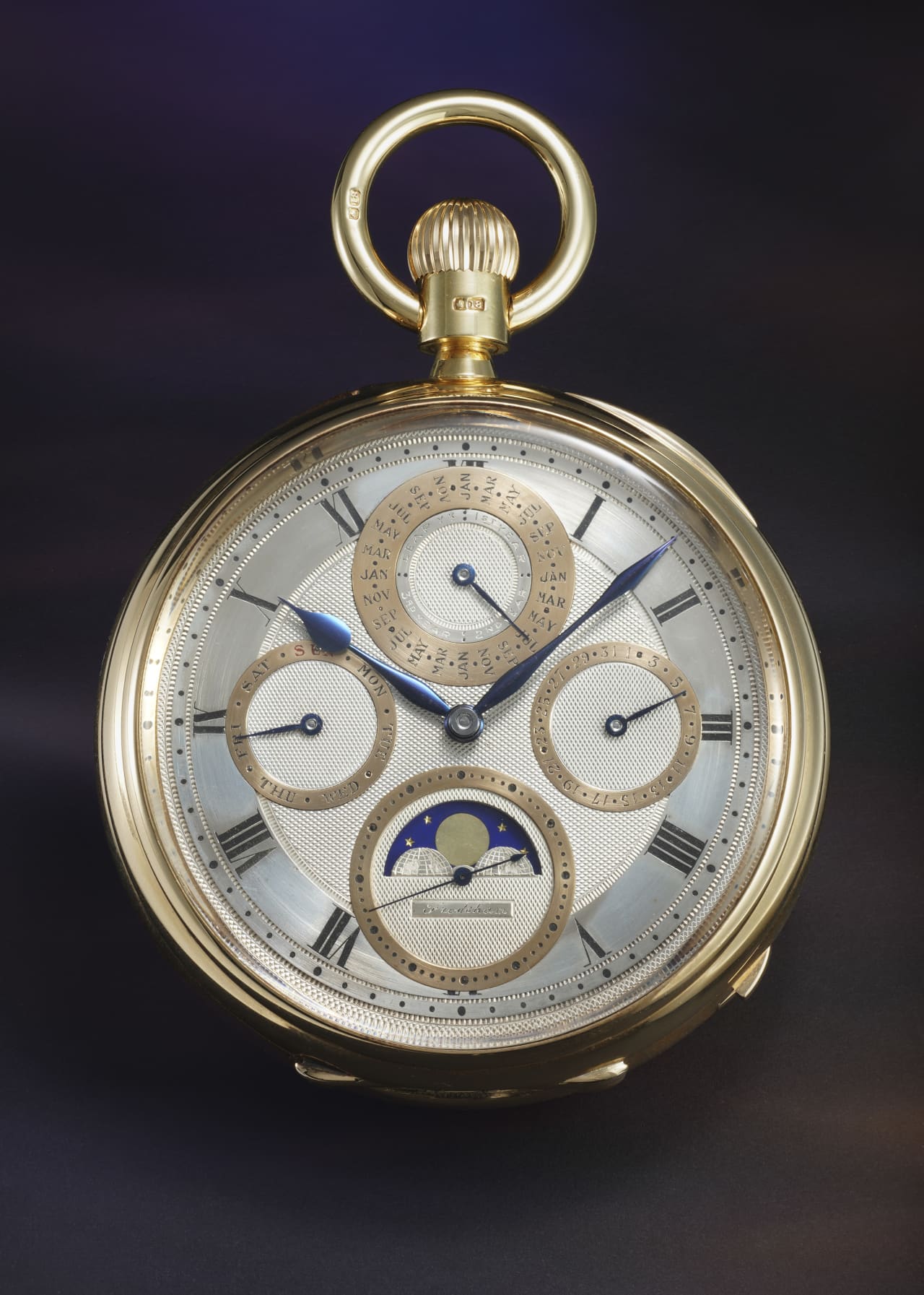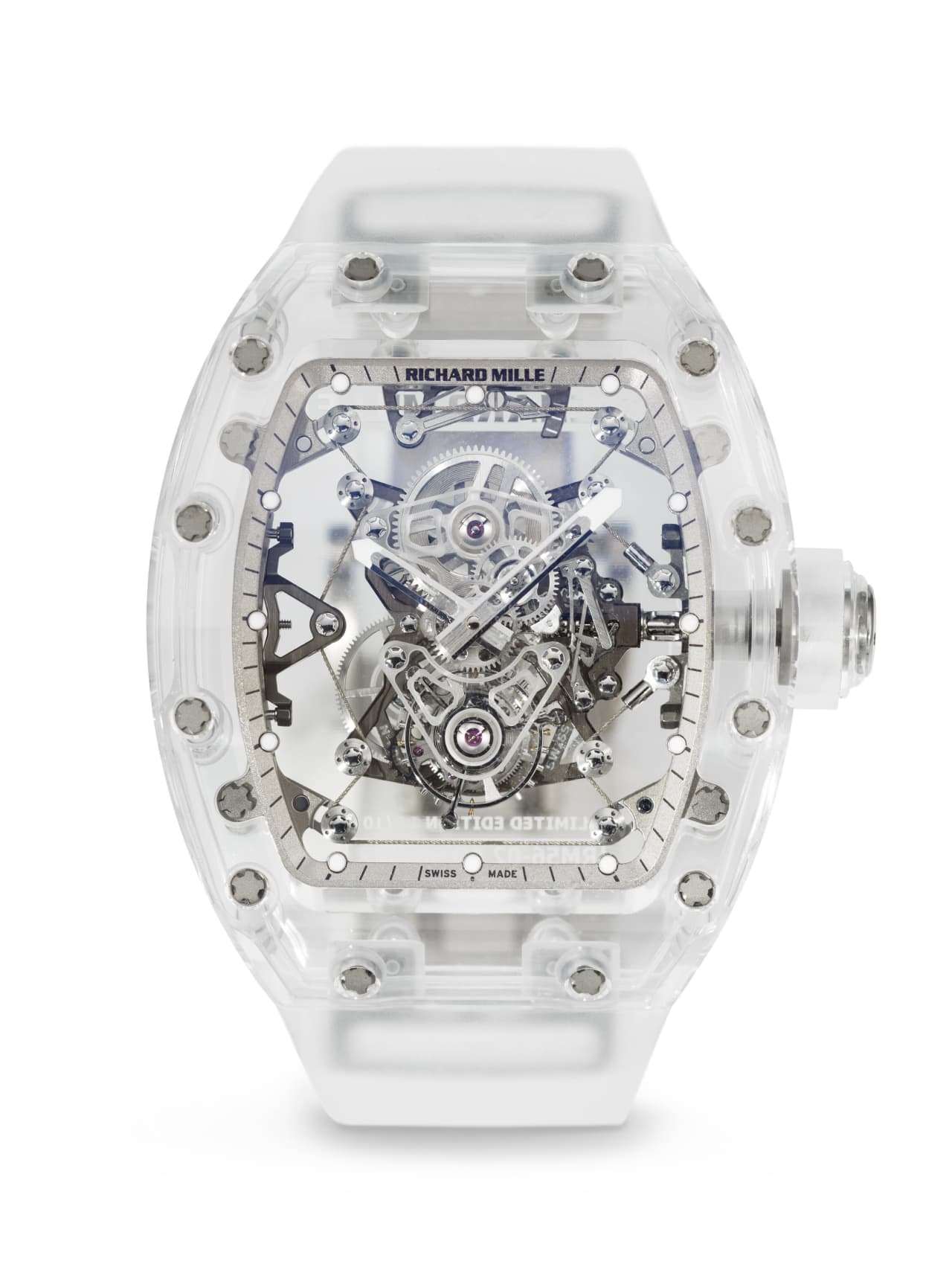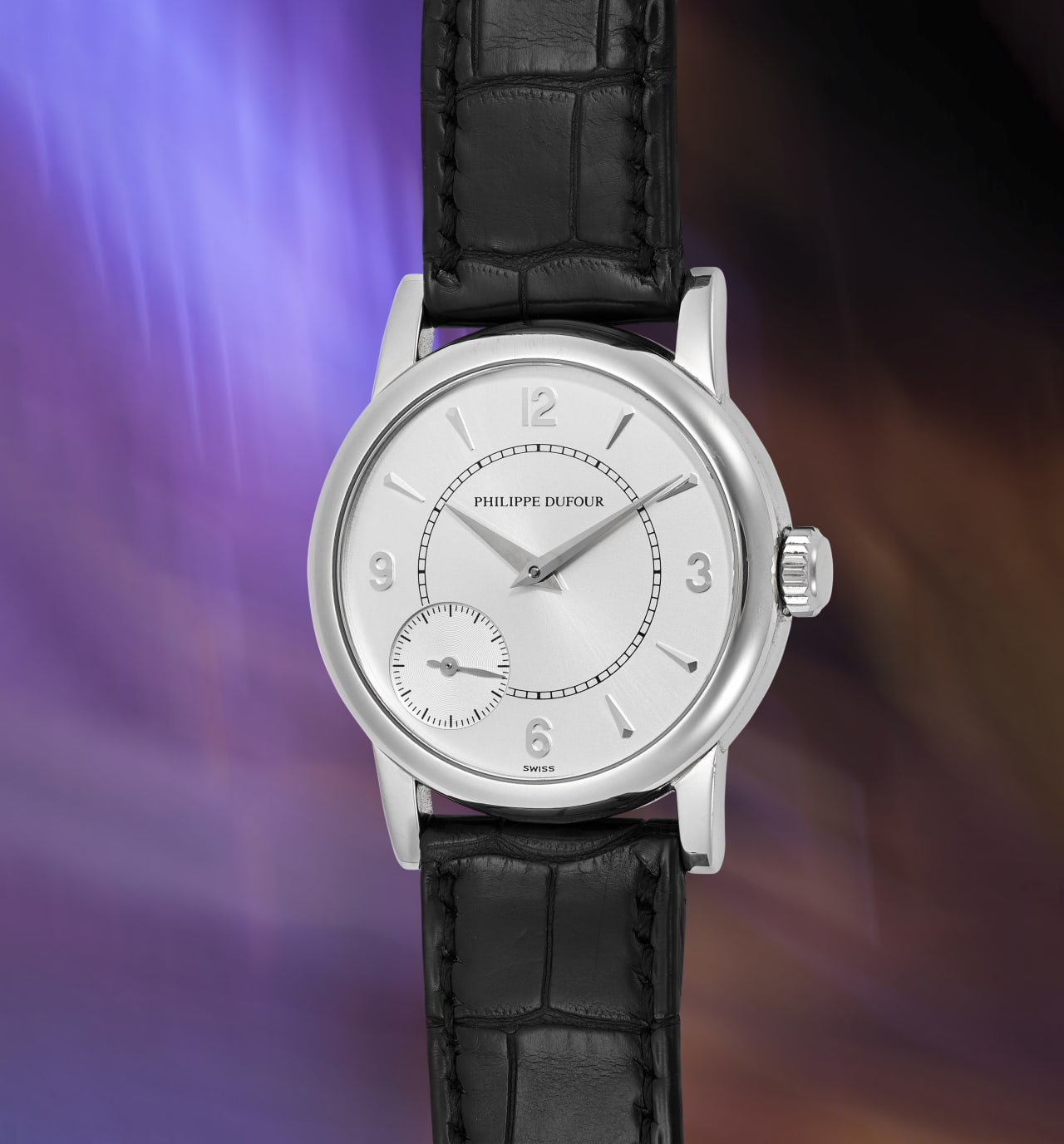New York Watch Auctions Record Uptick in Sales in the Face of Market Slowdown
Luxury watch collectors showed ongoing strong demand for Patek Philippe, growing interest in modern watches and a preference for larger case sizes and leather straps at the June watch sales in New York, according to an analysis of the major auctions.
Independent and neo-vintage categories, meanwhile, experienced declines in total sales and average prices, said the report from EveryWatch, a global online platform for watch information. Overall, the New York auctions achieved total sales of US$52.27 million, a 9.87% increase from the previous year, on the sale of 470 lots, reflecting a 37% increase in volume. Unsold rates ticked down a few points to 5.31%, according to the platform’s analysis.
EveryWatch gathered data from official auction results for sales held in New York from June 5 to 10 at Christie’s, Phillips, and Sotheby’s. Limited to watch sales exclusively, each auction’s data was reviewed and compiled for several categories, including total lots, sales and sold rates, highest prices achieved, performance against estimates, sales trends in case materials and sizes as well as dial colors, and more. The resulting analysis provides a detailed overview of market trends and performance.

“We still see a strong thirst for rare, interesting, and exceptional watches, modern and vintage alike, despite a little slow down in the market overall,” says Paul Altieri, founder and CEO of the California-based pre-owned online watch dealer BobsWatches.com, in an email. “The results show that there is still a lot of money floating around out there in the economy looking for quality assets.”
Patek Philippe came out on top with more than US$17.68 million on the sale of 122 lots. It also claimed the top lot: Sylvester Stallone’s Patek Philippe GrandMaster Chime 6300G-010, still in the sealed factory packaging, which sold at Sotheby’s for US$5.4 million, much to the dismay of the brand’s president, Thierry Stern . The London-based industry news website WatchPro estimates the flip made the actor as much as US$2 million in just a few years.

Richard Mille
“As we have seen before and again in the recent Sotheby’s sale, provenance can really drive prices higher than market value with regards to the Sylvester Stallone Panerai watches and his standard Patek Philippe Nautilus 5711/1a offered,” Altieri says.
Patek Philippe claimed half of the top 10 lots, while Rolex and Richard Mille claimed two each, and Philippe Dufour claimed the No. 3 slot with a 1999 Duality, which sold at Phillips for about US$2.1 million.
“In-line with EveryWatch’s observation of the market’s strong preference for strap watches, the top lot of our auction was a Philippe Dufour Duality,” says Paul Boutros, Phillips’ deputy chairman and head of watches, Americas, in an email. “The only known example with two dials and hand sets, and presented on a leather strap, it achieved a result of over US$2 million—well above its high estimate of US$1.6 million.”
In all, four watches surpassed the US$1 million mark, down from seven in 2023. At Christie’s, the top lot was a Richard Mille Limited Edition RM56-02 AO Tourbillon Sapphire, the most expensive watch sold at Christie’s in New York. That sale also saw a Richard Mille Limited Edition RM52-01 CA-FQ Tourbillon Skull Model go for US$1.26 million to an online buyer.
Rolex expert Altieri was surprised one of the brand’s timepieces did not crack the US$1 million threshold but notes that a rare Rolex Daytona 6239 in yellow gold with a “Paul Newman John Player Special” dial came close at US$952,500 in the Phillips sale.
The Crown did rank second in terms of brand clout, achieving sales of US$8.95 million with 110 lots. However, both Patek Philippe and Rolex experienced a sales decline by 8.55% and 2.46%, respectively. The independent brand Richard Mille, with US$6.71 million in sales, marked a 912% increase from the previous year with 15 lots, up from 5 lots in 2023.
The results underscored recent reports of prices falling on the secondary market for specific coveted models from Rolex, Patek Philippe, and Audemars Piguet. The summary points out that five top models produced high sales but with a fall in average prices.
The Rolex Daytona topped the list with 42 appearances, averaging US$132,053, a 41% average price decrease. Patek Philippe’s Nautilus, with two of the top five watches, made 26 appearances with an average price of US$111,198, a 26% average price decrease. Patek Philippe’s Perpetual Calendar followed with 23 appearances and a US$231,877 average price, signifying a fall of 43%, and Audemars Piguet’s Royal Oak had 22 appearances and an average price of US$105,673, a 10% decrease. The Rolex Day Date is the only watch in the top five that tracks an increase in average price, which at US$72,459 clocked a 92% increase over last year.
In terms of categories, modern watches (2005 and newer) led the market with US$30 million in total sales from 226 lots, representing a 53.54% increase in sales and a 3.78% increase in average sales price over 2023. Vintage watches (pre-1985) logged a modest 6.22% increase in total sales and an 89.89% increase in total lots to 169.
However, the average price was down across vintage, independent, and neo-vintage (1990-2005) watches. Independent brands saw sales fall 24.10% to US$8.47 million and average prices falling 42.17%, while neo-vintage watches experienced the largest decline in sales and lots, with total sales falling 44.7% to US$8.25 million, and average sales price falling 35.73% to US$111,000.
 Copyright 2020, Dow Jones & Company, Inc. All Rights Reserved Worldwide. LEARN MORE
Copyright 2020, Dow Jones & Company, Inc. All Rights Reserved Worldwide. LEARN MORE
A divide has opened in the tech job market between those with artificial-intelligence skills and everyone else.
A 30-metre masterpiece unveiled in Monaco brings Lamborghini’s supercar drama to the high seas, powered by 7,600 horsepower and unmistakable Italian design.
A divide has opened in the tech job market between those with artificial-intelligence skills and everyone else.
There has rarely, if ever, been so much tech talent available in the job market. Yet many tech companies say good help is hard to find.
What gives?
U.S. colleges more than doubled the number of computer-science degrees awarded from 2013 to 2022, according to federal data. Then came round after round of layoffs at Google, Meta, Amazon, and others.
The Bureau of Labor Statistics predicts businesses will employ 6% fewer computer programmers in 2034 than they did last year.
All of this should, in theory, mean there is an ample supply of eager, capable engineers ready for hire.
But in their feverish pursuit of artificial-intelligence supremacy, employers say there aren’t enough people with the most in-demand skills. The few perceived as AI savants can command multimillion-dollar pay packages. On a second tier of AI savvy, workers can rake in close to $1 million a year .
Landing a job is tough for most everyone else.
Frustrated job seekers contend businesses could expand the AI talent pipeline with a little imagination. The argument is companies should accept that relatively few people have AI-specific experience because the technology is so new. They ought to focus on identifying candidates with transferable skills and let those people learn on the job.
Often, though, companies seem to hold out for dream candidates with deep backgrounds in machine learning. Many AI-related roles go unfilled for weeks or months—or get taken off job boards only to be reposted soon after.
Playing a different game
It is difficult to define what makes an AI all-star, but I’m sorry to report that it’s probably not whatever you’re doing.
Maybe you’re learning how to work more efficiently with the aid of ChatGPT and its robotic brethren. Perhaps you’re taking one of those innumerable AI certificate courses.
You might as well be playing pickup basketball at your local YMCA in hopes of being signed by the Los Angeles Lakers. The AI minds that companies truly covet are almost as rare as professional athletes.
“We’re talking about hundreds of people in the world, at the most,” says Cristóbal Valenzuela, chief executive of Runway, which makes AI image and video tools.
He describes it like this: Picture an AI model as a machine with 1,000 dials. The goal is to train the machine to detect patterns and predict outcomes. To do this, you have to feed it reams of data and know which dials to adjust—and by how much.
The universe of people with the right touch is confined to those with uncanny intuition, genius-level smarts or the foresight (possibly luck) to go into AI many years ago, before it was all the rage.
As a venture-backed startup with about 120 employees, Runway doesn’t necessarily vie with Silicon Valley giants for the AI job market’s version of LeBron James. But when I spoke with Valenzuela recently, his company was advertising base salaries of up to $440,000 for an engineering manager and $490,000 for a director of machine learning.
A job listing like one of these might attract 2,000 applicants in a week, Valenzuela says, and there is a decent chance he won’t pick any of them. A lot of people who claim to be AI literate merely produce “workslop”—generic, low-quality material. He spends a lot of time reading academic journals and browsing GitHub portfolios, and recruiting people whose work impresses him.
In addition to an uncommon skill set, companies trying to win in the hypercompetitive AI arena are scouting for commitment bordering on fanaticism .
Daniel Park is seeking three new members for his nine-person startup. He says he will wait a year or longer if that’s what it takes to fill roles with advertised base salaries of up to $500,000.
He’s looking for “prodigies” willing to work seven days a week. Much of the team lives together in a six-bedroom house in San Francisco.
If this sounds like a lonely existence, Park’s team members may be able to solve their own problem. His company, Pickle, aims to develop personalised AI companions akin to Tony Stark’s Jarvis in “Iron Man.”
Overlooked
James Strawn wasn’t an AI early adopter, and the father of two teenagers doesn’t want to sacrifice his personal life for a job. He is beginning to wonder whether there is still a place for people like him in the tech sector.
He was laid off over the summer after 25 years at Adobe , where he was a senior software quality-assurance engineer. Strawn, 55, started as a contractor and recalls his hiring as a leap of faith by the company.
He had been an artist and graphic designer. The managers who interviewed him figured he could use that background to help make Illustrator and other Adobe software more user-friendly.
Looking for work now, he doesn’t see the same willingness by companies to take a chance on someone whose résumé isn’t a perfect match to the job description. He’s had one interview since his layoff.
“I always thought my years of experience at a high-profile company would at least be enough to get me interviews where I could explain how I could contribute,” says Strawn, who is taking foundational AI courses. “It’s just not like that.”
The trouble for people starting out in AI—whether recent grads or job switchers like Strawn—is that companies see them as a dime a dozen.
“There’s this AI arms race, and the fact of the matter is entry-level people aren’t going to help you win it,” says Matt Massucci, CEO of the tech recruiting firm Hirewell. “There’s this concept of the 10x engineer—the one engineer who can do the work of 10. That’s what companies are really leaning into and paying for.”
He adds that companies can automate some low-level engineering tasks, which frees up more money to throw at high-end talent.
It’s a dynamic that creates a few handsomely paid haves and a lot more have-nots.
A divide has opened in the tech job market between those with artificial-intelligence skills and everyone else.
From Italy’s $93,000-a-night villas to a $20,000 Bowral château, a new global ranking showcases the priciest Airbnbs available in 2026.





















